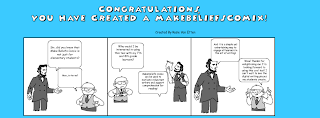Objectives:
At the end of this scenario, the learner will be able to summarize and discuss the purposes and conventions of their writing.
At the end of this scenario, the learner will be able to compose a letter for real purposes to an authentic audience.
At the end of this scenario, the learner will be able to define the names and conventions of a friendly letter.
Procedure:
SESSION ONE
1. Gather students together for a read-aloud of the book The Gardener. Explain that this is the story of a little girl who goes to live with her uncle in the city when her father loses his job, and that the story is written through her letters home.
2. Read The Gardener aloud. Ask students to take note using their Sticky Notes of the different parts Lydia Grace includes in the letters she sends. As they identify the components, provide the labels for them if students do not know them:
date
salutation or greeting
body
closing
postscript (PS)
3. At the end of the story, have students respond to the story itself. Help students discuss the different purposes Lydia Grace uses letters to achieve. Possible answers include sharing information, expressing something that is difficult to say face to face, expressing gratitude, and so forth.
4. Explain to students that the class is now going to write a letter together. Ask them to think about someone at school who has been helpful to them in some way. A good choice may be the principal, but students can help decide on any adult who has made a contribution.
5. After students choose the letter recipient, have them briefly brainstorm ideas to include in the letter.
6. Tape chart paper to the board to begin the shared letter-writing activity. Continue to elicit information for the letter from students through questioning. Make sure that all letter-writing elements are included: date, salutation, body, closing, and postscript.
7. After the letter is complete, label the components and keep the finished product on display for reference in the next session.
8. Tell students that in the next session, they will be writing a letter to someone (an adult) within the school who has done something to help them.
SESSION TWO
1. Begin the session by telling students they are going to continue their study of letter
writing and gather them for a read-aloud of Dear Mr. Blueberry. Discuss the nature and
style of ongoing correspondence between Emily and Mr. Blueberry.
2. Review with students the parts of the letter using the sample from the previous session.
Share with them the Letter Generator Web 2.0 tool to have another model for the product.
3. Share/introduce the Letter Checklist so students can self-evaluate their letters before
Mailing them via office mailboxes.
4. Have students open the Letter Generator for another review of the parts of a letter. Ask
5. As students write their letters, have them use the class-made references when
necessary.
SESSION THREE
1. Have students share letters in small groups and help each other revise and expand on
their thoughts where appropriate. Give students time to return to the Letter Generator to make revisions if necessary.
2. When students are finished, make a model of an envelope using a horizontal full sheet
of construction paper, showing the correct placement of the return address and
recipient’s address. Have them address their envelopes and affix stamps for mailing.
3. The class will walk to the main office to deposit their letters in the appropriate
mailboxes.
Web 2.0 Tool:
Letter Generator: This online tool allows students to read about the parts of a letter. They can then write and print their own friendly letter. The Letter Generator is a useful tool for students to learn the parts of a friendly letter and then compose and print letters of correspondence.
Social Participation/Social Learning:
Through-out the lesson the students will be instructed to “turn and talk” and the students will be required to share their letters in small groups and help each other revise and expand on their thoughts where appropriate. Students will be given time to return to the Letter Generator to make revisions if necessary.
Making Connections:
The students will make a connection when thinking of that someone who has been helpful to them in some way.
Create/Produce:
The students will compose a friendly letter for a real purpose to an authentic audience.
Assessment:
The Letter Writing Checklist
Reflection:
The students will reflect by sharing their experience of writing a friendly letter in their daily journals.
The students enjoyed typing and using the computers rather than writing.
The educator will evaluate the success or lack of success of writing a friendly letter by using the Letter Writing Checklist and make changes as needed.
Using the Web 2.0 tool was a success! I enjoyed teaching the lesson and my students certainly enjoyed learning the process of writing a letter using this great tool. In the future, I may use another form of reflection for the students because as struggling writer's their journal entries were vague. Therefore, requiring some conferences, which took up a lot of time. Maybe verbal expression would be a better format of reflection for them.































